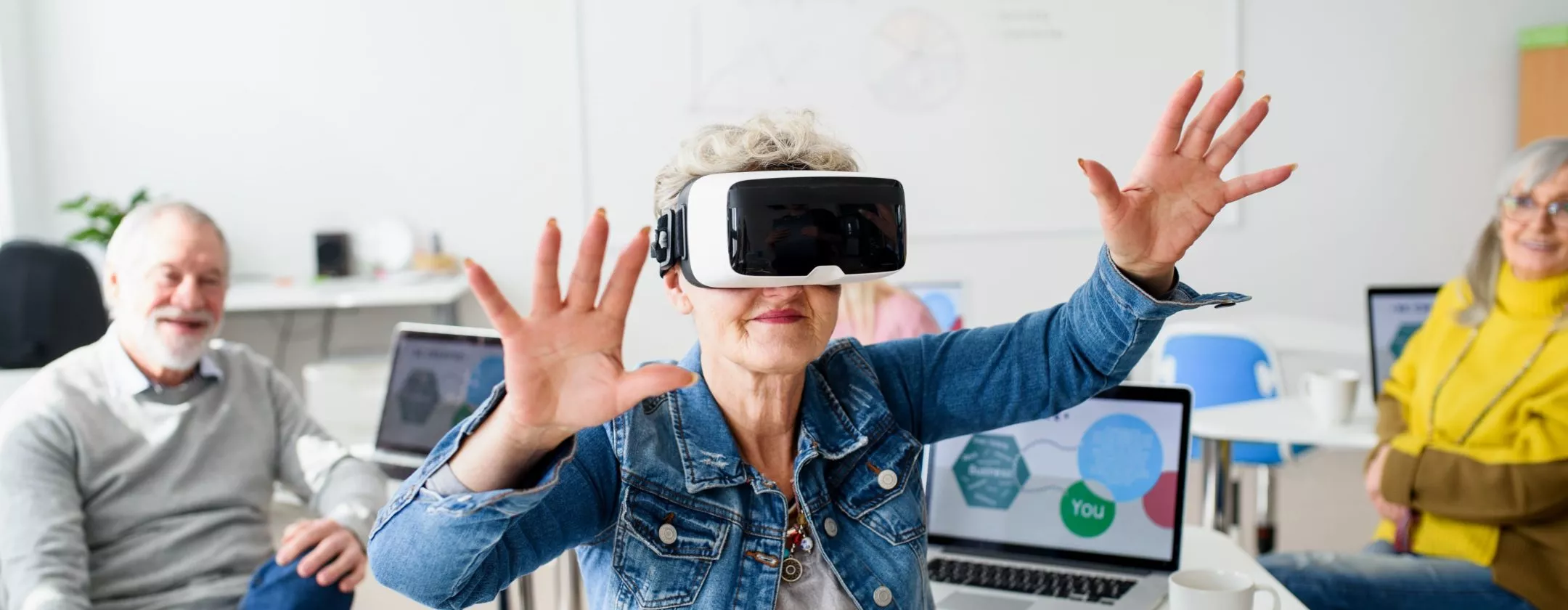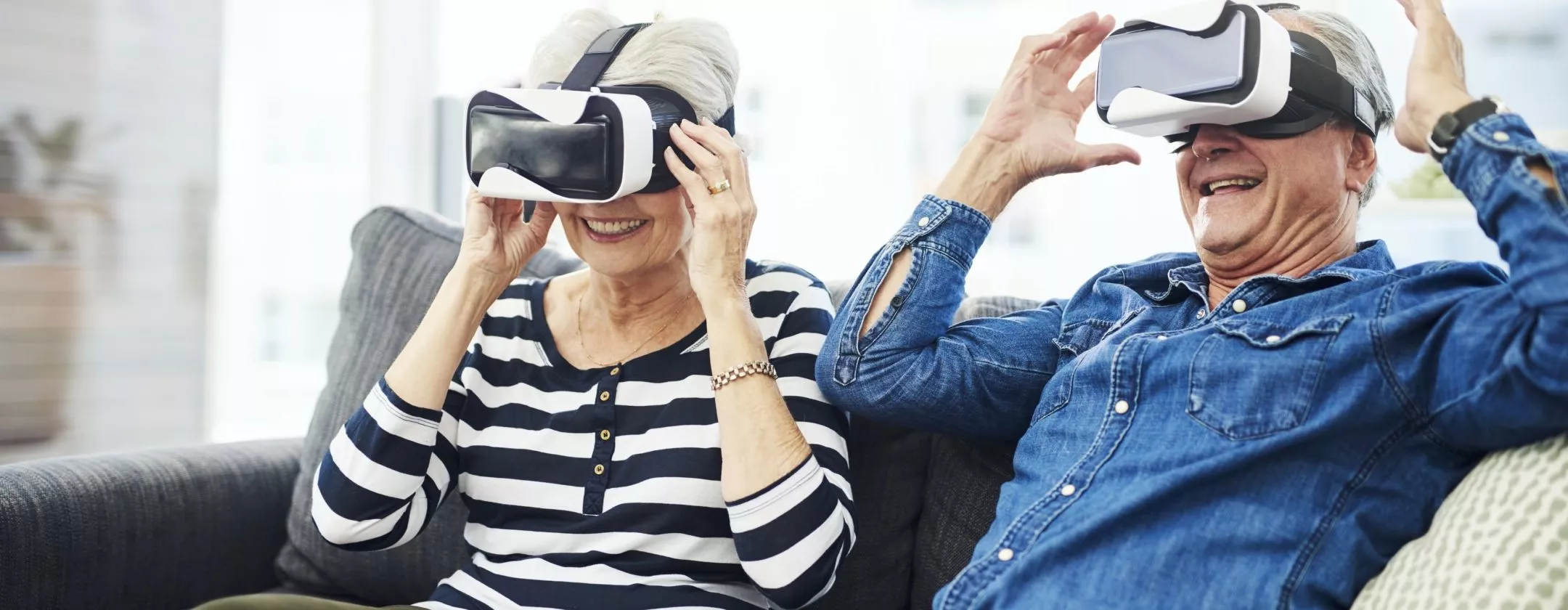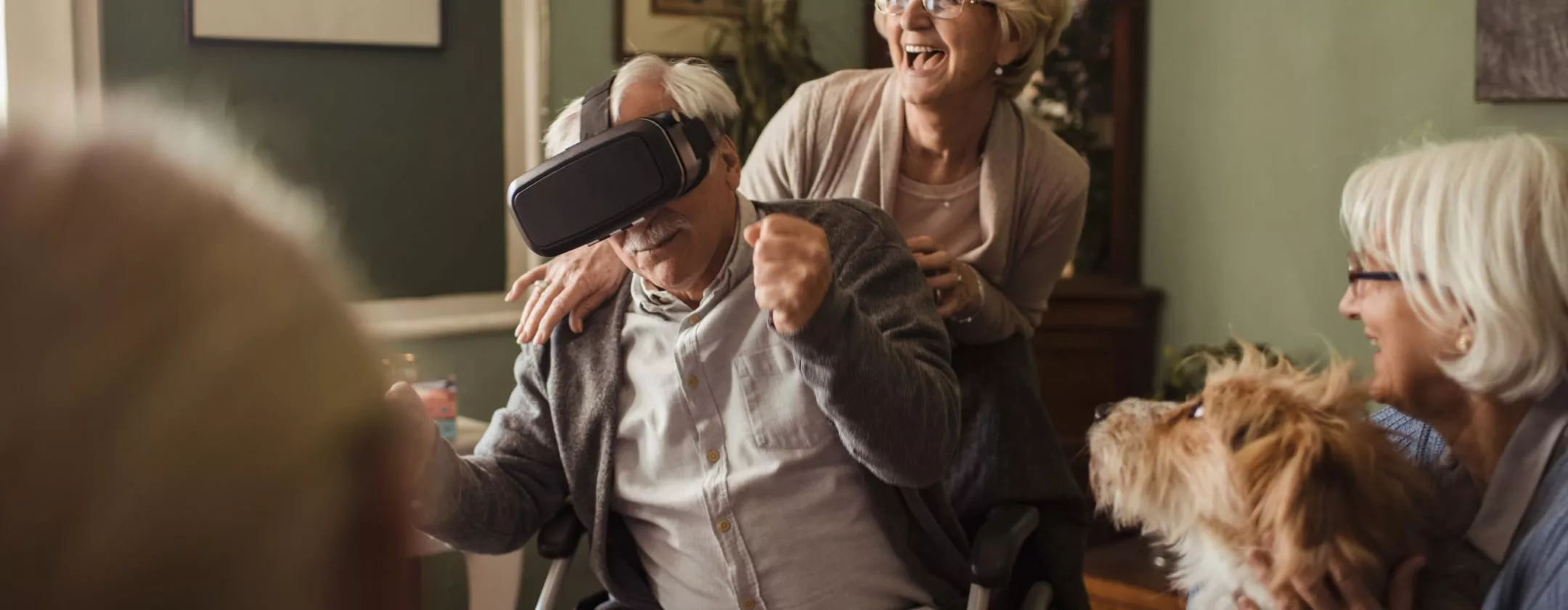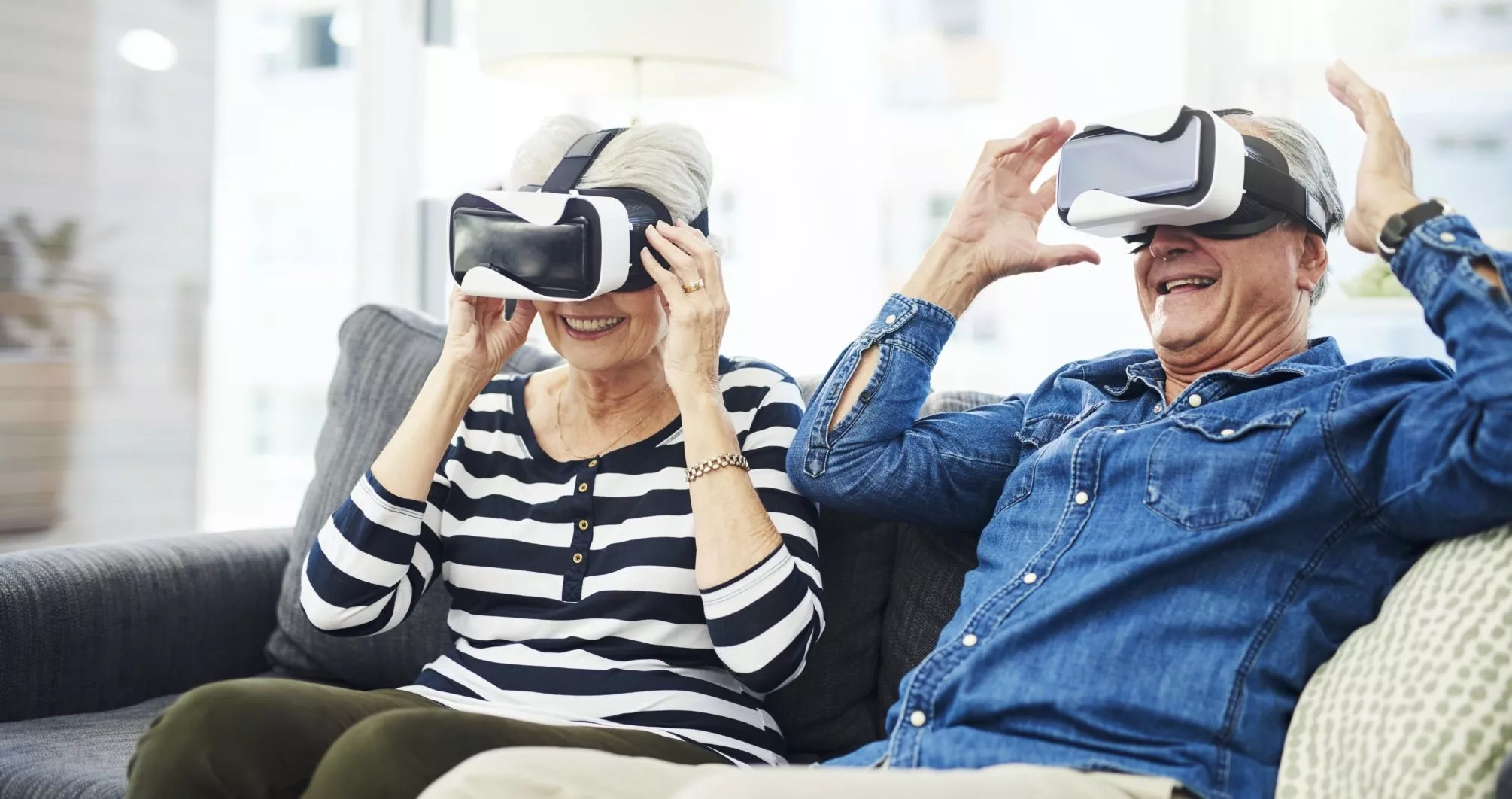VOA News filmed a video featuring two Oakmont residents trying the new, innovative technology, Rendever. View the video below to learn the special insights they uncovered.
Imagine traveling back to the house where you raised your children. The church where you got married. The beach where you had a family vacation fifty years ago.
Chances are these memories are cloudy, with some parts of your memories more distinct than others. This is only natural with the passage of time, but what happens when these memories completely fade and are lost forever?
For seniors with dementia whose memory is declining, this is a common issue. Memories shape who we are and connect us to family and friends.
However, advances in virtual reality now present an innovative solution. Meet Rendever, a virtual reality platform, surrounding viewers with experiences, adventures, inspiring performances, and more.
Marita Davison, an environmental biologist, was intrigued by the possibilities of Rendever for seniors. She asks the audience: “Can new tech open old doors to the past?”
With the gracious volunteering of two Oakmont residents, she set out to find the answer. First, she invited Helyn Reinhold, one of Oakmont’s residents, to slip on a headset and travel back to the home she grew up in–the one her grandfather had built. Helyn’s daughter, Ann O’Rourke, shared afterward how VR really does trigger memories, which is so helpful because she tries her best to talk through memories with her mother in an effort to preserve them.
Our very own Kristin Barnes, Director of Activities at Oakmont, was also interviewed and shared her support. “The brain is quite interesting [about] unlocking those memories and what’s going to trigger them… I don’t know if we’ll ever know the magic behind it, but if a technology like that is able to bring that to our residents, then I’m all for it.”
Currently, Oakmont provides classes, activities, memory boxes, and sensory experiences to help trigger joyful memories. The addition of virtual reality to our suite of activities is an exciting step forward.

Photo Courtesy of Halfpoint/iStock
Kristin noted the possibilities of this technology: “Virtual reality, what I’ve noticed before anything, triggers those conversations; it triggers those memories that maybe other activities, exercise classes may not trigger. Seeing those exact pictures or seeing the home their grandfather built… we can’t make that up, and it allows us to tap into some of those long-term memories.”
Memories like those of Margie Kilby, another Oakmont resident, who loves the snow. “Boy, does that seem familiar,” Margie said as she donned a headset and viewed a virtual reality photo of Mammoth Mountain. Her daughter, Kim Thornton, explained how she and her family were avid skiers and went down Mammoth Mountain many times.
Marita Davison, the environmental biologist, asked Margie: “That brings back a lot of memories, Margie?” Margie showcased her quick wit, joking, “I don’t see anyone I recognize.”
After much ensuing laughter and after Margie took off her headset, the magic happened.
Margie’s daughter reminisced, sharing with Marita, “Growing up, once we learned how to ski, she would give us five dollars, a Snickers bar, and say ‘meet us back here at 6.’” Margie interjected, “Are you remembering?” Kim laughed, looking lovingly towards her mother: “Are you kidding? Growing up there…” Both mother and daughter shared a laugh, remembering their times together at Mammoth Mountain. A magical moment of mother-daughter connection was kindled.
Kristin shared: “I think it’s the look in their eyes when we’re done with an experience and we take the headset off, and there always seems to be some sort of a pause. And I feel like that’s the kind of reflective moment kicking in. I’m always curious what that first sentence is going to be after that moment. It’s not even so much about the video that they’re seeing or interacting with. It’s the aftermath, it’s the conversation that happens afterward.”

Photo Courtesy of Moyo Studio/iStock
Kim also expressed just how much memories meant to her: “To me and my family, it’s everything because that’s what keeps us connected. When I say, ‘you taught me how to ski between your legs’ and things like that, those connect us still… If we can still connect on a memory, we’re still connecting, and that’s everything.”
David Stoller, Director of Community Engagement for Rendever, shared: “[Virtual reality can] take people back to a physical and emotional place that they’d never have the opportunity to visit.” Perhaps more than a photograph ever could, virtual reality can allow a person to immerse themselves in places of the past, absorbing all of the joyful, complex feelings associated with those particular places.
Virtual reality is an important tool that can improve the quality of life for both residents and family members. Residents, especially in the age of COVID, will be able to socialize more and feel less alone, connecting through headsets with both distant family members and nearby neighbors. They can feel positive emotions and trigger fond long-term memories. They can experience new worlds that cognitive diseases might not have otherwise allowed.
As Kristin Barnes shared in the video, virtual reality is becoming a part of not only memory care programming, but also senior living programming as a whole. Especially as the next generation of seniors is more familiar with technology, virtual reality holds many benefits in store. We can’t wait to see what advances happen next.
View the full video above, and visit our Traditions Memory Care page to learn more about our compassionate care for seniors with dementia.

Photo Courtesy of vorDa/iStock



